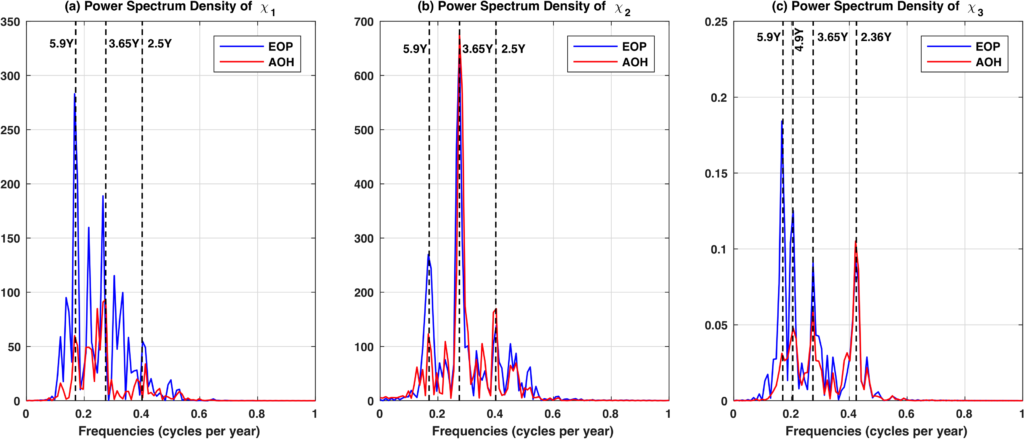
Dr. Jianli Chen, a Senior Research Scientist at the UT Center for Space Research led a new study published in the Journal of Geophysical Research [Chen, J., Wilson, C. R., Kuang, W., & Chao, B. F. (2019). Interannual oscillations in Earth rotation. Journal of Geophysical Research: Solid Earth 124]. https://doi.org/10.1029/2019JB018541]. Variations of Earth rotation are driven by mass redistribution in the climate and solid Earth system, and interactions between the core and mantle. This study provides a comprehensive analysis of interannual oscillations in all three components of Earth rotation using accurately measured polar motion and length-of-day (LOD) time series, and geophysical excitations computed from atmospheric, oceanic and hydrological models over the period 1962 to 2018. Strong interannual oscillations have been identified in all three components (after de-trending and band-pass filtering to retain variations at periods between 2 and 8 years). Polar motion Y is dominated by a 3.65-year oscillation, plus others at periods of 2.5 and 5.9 years. Polar motion X shows a strong oscillation near 5.9 years, plus smaller variations at shorter periods. A 5.9-year LOD oscillation has been recognized in earlier studies, but oscillations at periods of 2.36, 3.65 and 4.9 years are also observed. Atmosphere, ocean, and hydrosphere (AOH) sources largely account for other oscillations, but not for the 5.9-year component. The 5.9-year LOD oscillation becomes more prominent after AOH sources have been subtracted. This is the first study to have identified a 5.9-year oscillation in polar motion. The presence of a 5.9-year oscillation in all three components of Earth rotation suggests a source in Earth’s interior, probably from the core.
